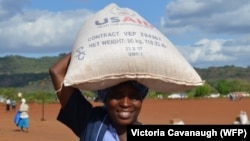The American-based Famine Early Warning System Network (FEWSNET) says livelihood options in the southern parts of Zimbabwe are now limited and current incomes are low and expected to continue deteriorating in September.
In its latest report, FEWSNET says most poor and very poor households in Masvingo, Matabeleland region, southern Midlands and Manicaland provinces are now relying on cereal purchases being sold at high prices.
It says average maize prices in June remain atypically high in these regions due to poor availability on the markets and long transport distances from source markets.
According to FEWSNET, in May, the average maize price in Matabeleland North was 81 cents per kilogram, which is 18 percent above last year’s price of 65 cents per kilogram.
The report says grain millers and other private traders are reportedly importing maize grain from Zambia to supply markets in Zimbabwe. It added that anecdotal reports suggest that government has started formal imports of maize grain from Zambia and that deliveries are being directed to deficit areas in the south.
Says the report: "Matebeleland North has the highest average maize meal price at $0.81/kg, which is 18 percent above last year’s price ($0.65/kg). Since their source market is mainly in South Africa, this increase is partly due to the deterioration of the exchange rate between the South African rand and the U.S dollar."
FEWSNET says currently, the very poor and poor households are coping through earlier than normal small livestock sales in order to raise incomes for cereal purchases.
In some districts, the reports says, engagement in gold panning and other small-scale mining activities is reportedly increasing. Petty trading is common across all age groups and among both sexes in the area as well, FEWSNET says.
"Some of the very poor and poor households continue to rely on remittances from mainly South Africa. However, remittance levels continue to be affected by a weakening South African rand compared to the United States dollar," said the report.








